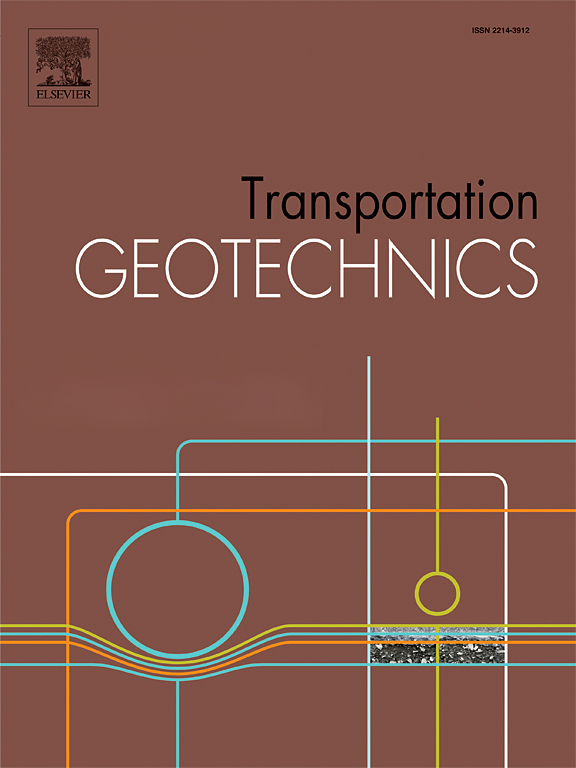Experimental study on tunneling-induced soil arching evolution in pile-raft foundations
Abstract
The evolution and progressive failure of the tunneling-induced soil arching effect in pile-raft foundations are still unclear. A series of tunnel-shaped trapdoor tests in a pile−raft foundation were conducted to study the effects of the tunnel−pile distance and the load on the subgrade surface on the progressive failure of the tunneling-induced soil arching effect. PIV technology was used to measure the evolution of the deformation pattern and shear bands of foundation soil with increasing tunnel volume loss. The ground reaction curve (GRC) for the tunnels and the pile settlement were measured by using a load cell and LVDTs. The results revealed that the minimum tunnel pressure in the pile-raft foundation was greater than that in the greenfield foundation because of the lower soil arching effect. The GRC curve in the pile−raft foundation can be divided into three stages: initial arching, maximum arching, and the ultimate stage. The minimum soil arching ratio decreased with increasing tunnel−pile distance and surface load. In the pile-raft foundation, a triangular disturbed zone was observed above the tunnel crown in the initial stage and gradually developed upward within a rectangular zone as the tunnel volume loss increased. The width of the tunneling-disturbed area was larger than the tunnel diameter in the ultimate stage. As the tunnel−pile distance increased, the evolution pattern of the tunnel-induced loosened area changed from “triangular expanding expansion” to “equal settlement expansion”. The effects of the tunnel−pile distance and surface loads on the tunneling-induced failure mechanism of pile−raft foundations are also discussed in this study, which provides valuable guidance for underground engineering construction.

 求助内容:
求助内容: 应助结果提醒方式:
应助结果提醒方式:


